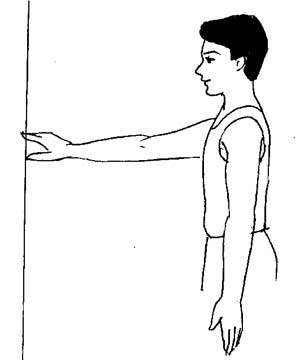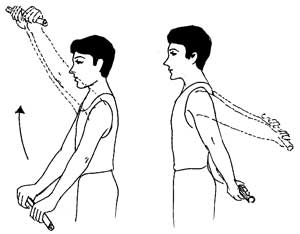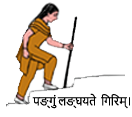Our shoulder is the laxest joint in our body. A large head of our arm bone (humerus) is held in alliance with a fluid shallow cup of wing bone (scapula – shoulder blade) by four fluid muscles. Picking objects from height (e.g., loft), working overhead (painting of ceiling), forcible throwing of objects, lifting heavy weights, and injuries to the shoulder (even sudden jerks during travel) can strain these fluid shoulder muscles and lead to stiffness and pain (frozen shoulder). Cervical spondylosis, swelling of the liver (right shoulder), and heart attack (left shoulder) can also cause pain in the shoulder. Frozen shoulder is common in diabetic patients. Exercise is the best treatment for all types of shoulder pain. Rest or immobilization can lead to more stiffness. Calcium and supplements of Vitamins B and D are also prescribed, along with exercises for shoulder pain.
Shoulder Exercises
See general instructions about exercise












Yoga postures such as bhujangasan, parvatasan, tadasan, naukasan and gomukhasan also help to reduce shoulder pain.
